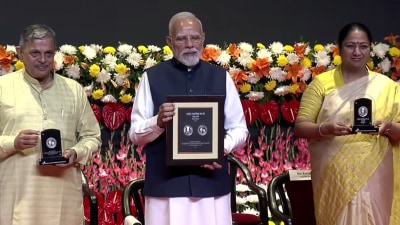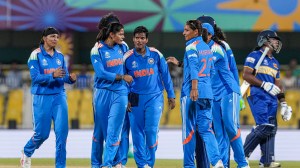After footballing Gods leave, gates open for lesser mortals
Goodbye international soccer, hello local sports and pop concerts: the glory days of Asia’s first World Cup are already over for 12 of ...

Goodbye international soccer, hello local sports and pop concerts: the glory days of Asia’s first World Cup are already over for 12 of the 20 sleek stadiums purpose-built by co-hosts South Korea and Japan.
But boosters of the beautiful, high-tech arenas hope the publicity they have attracted and the facilities they have built will keep people flocking back to their towns long after the World Cup is over.
“We wanted to make the city world famous. I think holding the World Cup games will advance the city’s development by at least 20 years,” said Kim Dong-Suk, a city hall official in Taegu, South Korea, which has still to stage one of its four matches.
Similar justifications pour from proud local officials up and down Japan and South Korea, which spent an estimated 570 billion yen ($4.59 billion) and 1,930 billion won ($1.58 billion) respectively constructing or refurbishing 10 stadiums each to meet the standards of FIFA, world soccer’s governing body.
For the moment, amid the euphoria generated by the co-hosts’ good run in the finals, grumbles about the cost are muffled. But sceptics fear the legacy of the spending spree will be a herd of white elephants devouring cash that Japan can no longer afford and South Korea could use better.
Author Alex Kerr said Japan’s stadiums were part of the same “boon doggle monument frenzy” — a product of cosy ties among construction firms, politicians and bureaucrats — that has led to much of the country being covered in concrete.
Even FIFA general secretary Michel Zen Ruffinen complained the other day that Japan and South Korea had built too many stadiums, turning the month-long tournament into a logistical nightmare.
Defenders say the criticism unfairly overlooks how the stadiums are plugging holes in the sports infrastructure of two hard-working countries that have skimped on leisure. South Korea, for example, has yet to move to a five-day week.
Most stadiums have been built as multi-purpose arenas and so can double up for baseball, athletics and other sports as well as cultural events such as concerts. Pusan, South Korea’s second city, will host athletics’ Asian Games in September. “This is the sports infrastructure of South Korea, not something to make money from,” said a city-government official in Sogwipo, a harbour town on the honeymoon island of Cheju that now has an architectural gem of a stadium seating 42,256. The population of the whole of the island is only half a million.
The story’s the same in Oita, southern Japan, home to the sleek 43,000-capacity Big Eye stadium whose retractable dome opens and closes like a blinking eye.
“We have no intention of attracting 40,000 people all thetime. Maybe once or twice a year,” Satoshi Saito, director at Oita prefectural government’s World Cup promotion bureau, said before the tournament. At Saitama North of Tokyo, venue of a semi-final next Wednesday, the stadium doubles as an emergency centre in case of an earthquake. Storehouses are packed with food, blankets and facilities to purify enough water for 3,000 people for a month. But some administrators admit they have not decided yet what to do with their new toys.
Some of the facilities at the new stadium in Seoul, Asia’s largest soccer-only arena seating 64,677, will be transformed after the finals into shops, cinemas, restaurants and a swimming pool, according to stadium media director Cho Chang-ho. “But we have no specific plans for the future use of the stadium,” he said. “Holding concerts is a possibility.”
How many people pass through the stadium gates could depend a lot on whether the World Cup gives soccer a permanent boost in countries where baseball is the national sport.
(Inputs from Oh Jung-Hwa and Lee Jin-Hee in Seoul and George Nishiyama in Tokyo) (Reuters)



- 01
- 02
- 03
- 04
- 05




























